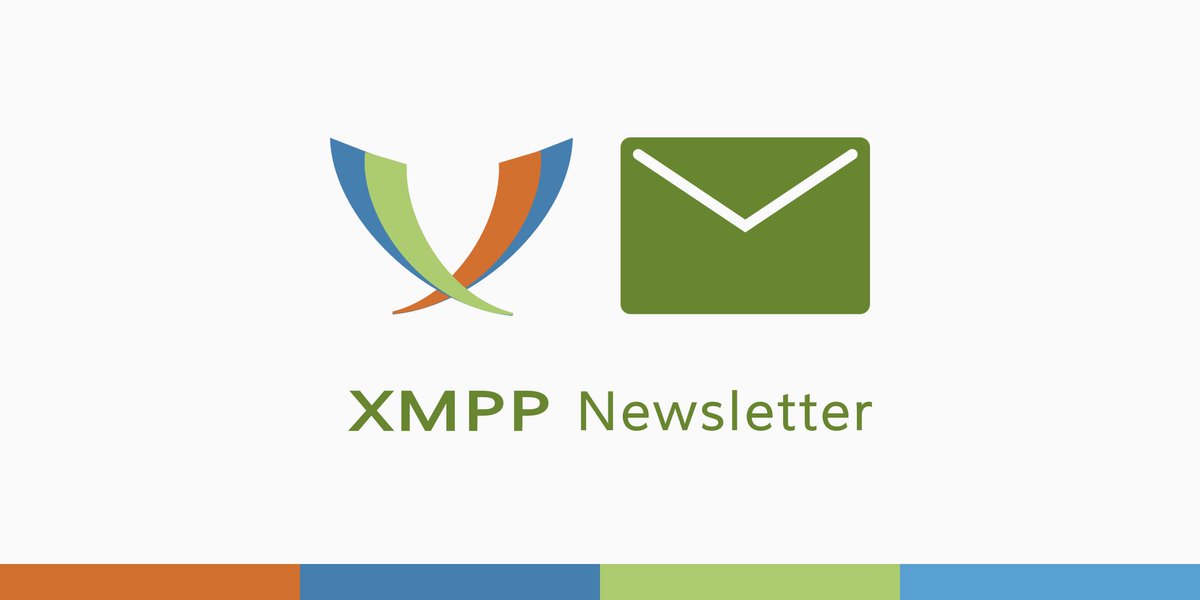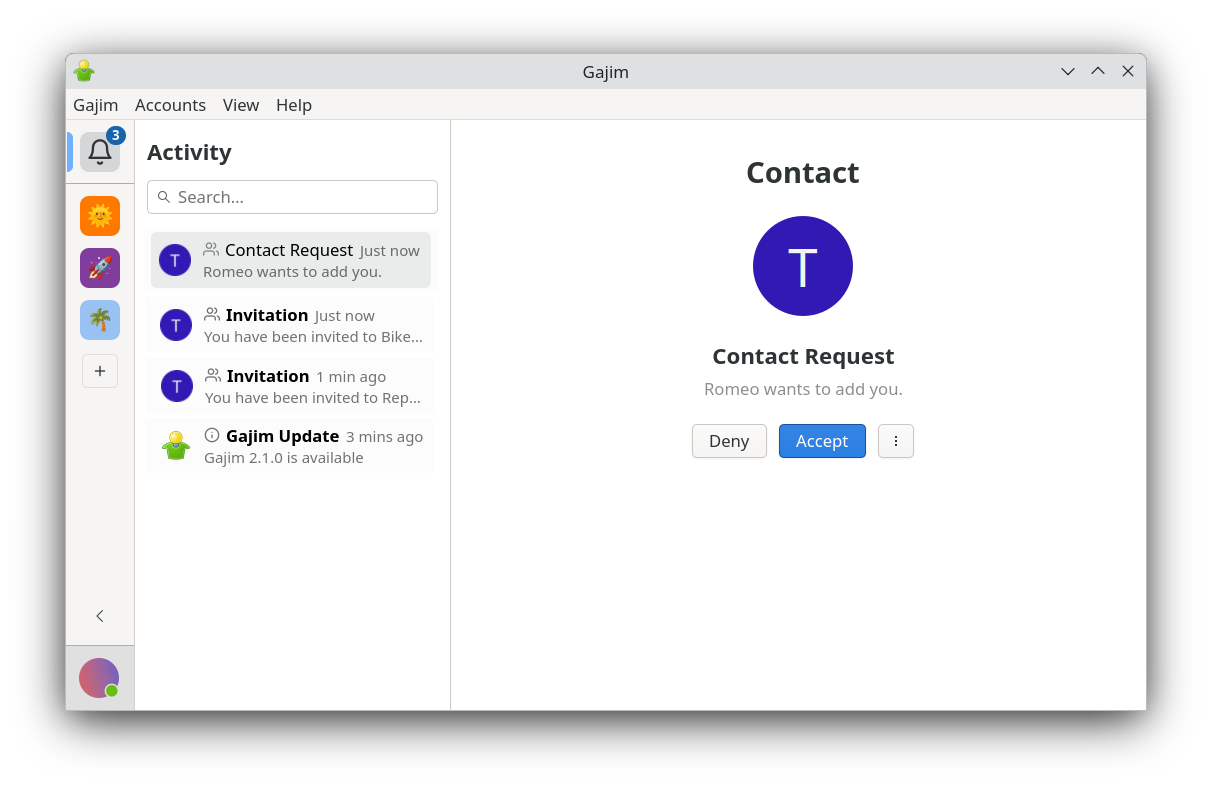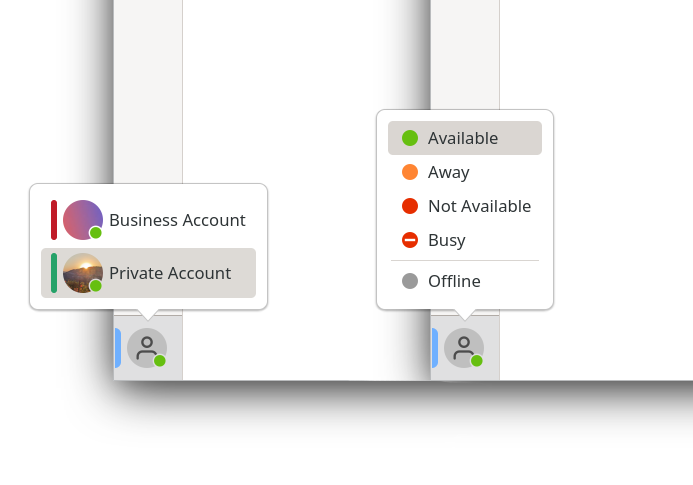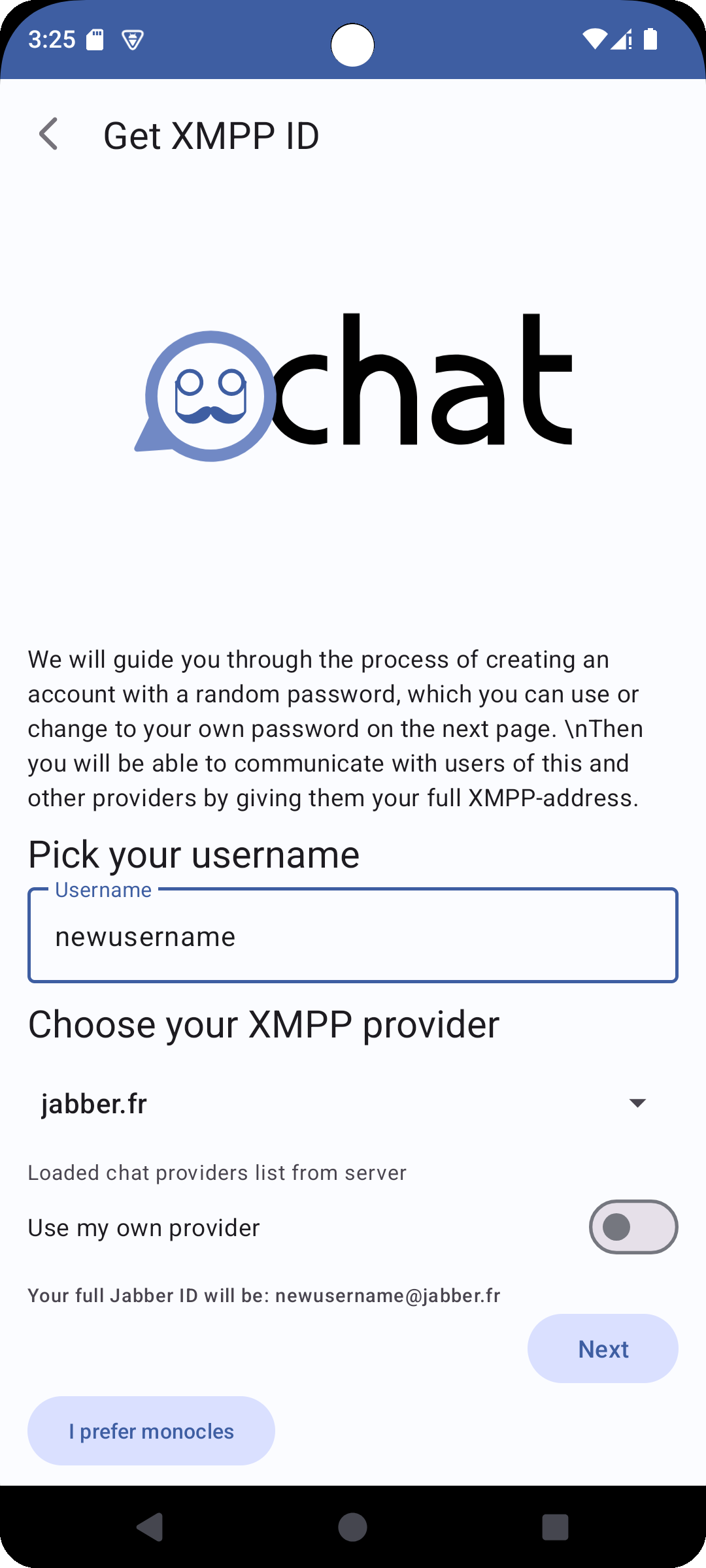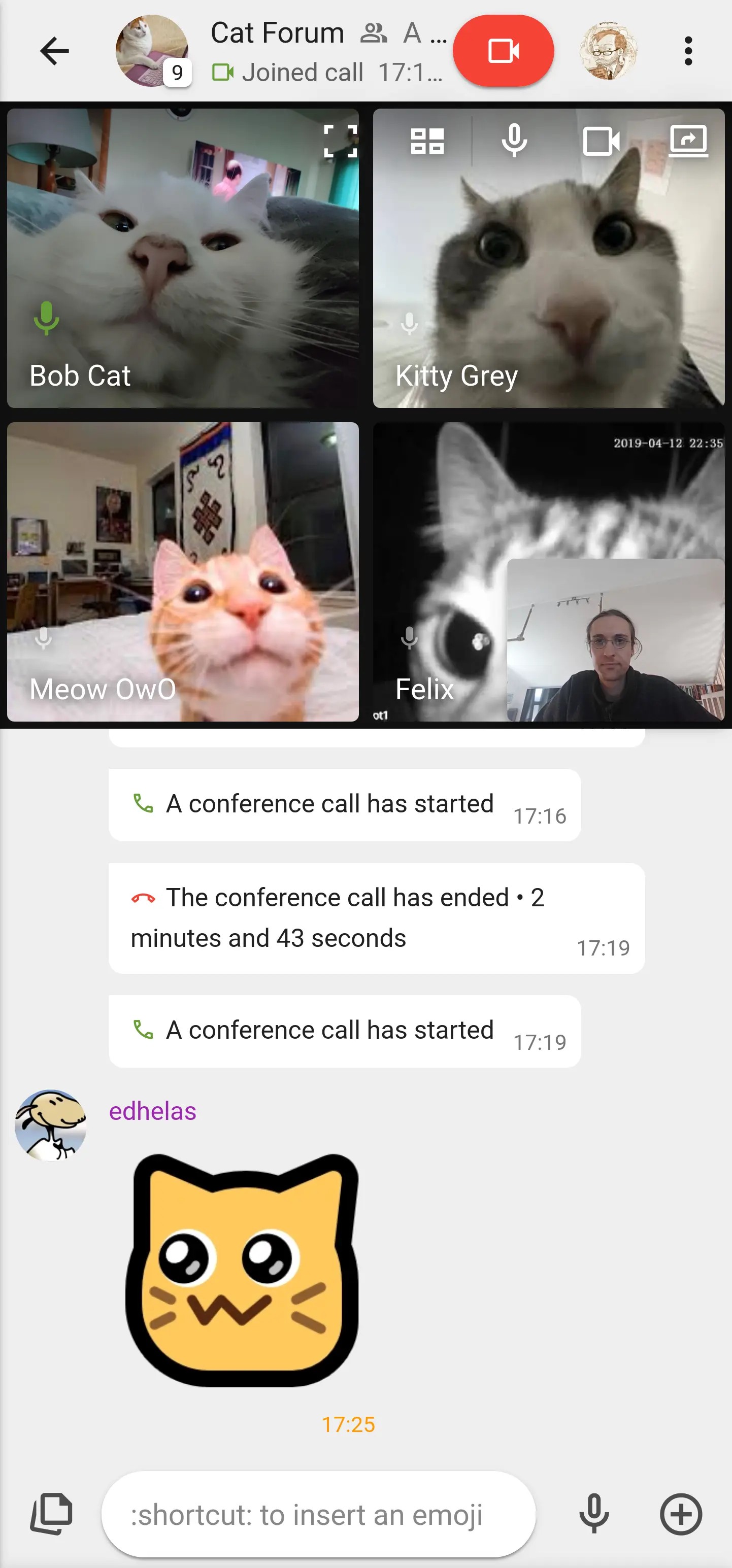
Release Highlights:
If you are upgrading from a previous version, please check the
changes in SQL schemas
; but there aren&apost changes in the configuration, API commands or hooks.
Other contents:
Below is a detailed breakdown of the improvements and enhancements:
Matrix Gateway with Room Support
ejabberd can bridge communications to
Matrix
servers since version 24.02 thanks to
mod_matrix_gw
, but until now only one-to-one conversations were supported.
Starting with ejabberd 25.03, now you can receive invitations to Matrix rooms and join public Matrix rooms by yourself. The Matrix bridge will be seen a multi-user chat service, as default
matrix.yourdomain.net
.
For example, once you have enabled the Matrix bridge, if you wish to join the room
#ejabberd-matrix-bridge:matrix.org
, you can use XMPP MUC protocol to enter the XMPP room:
#ejabberd-matrix-bridge%matrix.org@matrix.yourdomain.net
Caveats for this release:
-
Older room protocol version are not supported yet for this release. We only support room protocol version 9, 10 and 11 for now but are planning to add support for older rooms.
-
One to one conversation will need to be restarted empty after server restart as the persistence is not yet implemented.
-
matrix room members are those who kind of subscribed to the room, not necessarily online, and
mod_matrix_gw
sends a presence for each of them, it depends on whether the xmpp client can handle thousands of muc members.
Note that
matrix.org
server has also declared an XMPP service in its DNS entries. To communicate with the real Matrix server, you need to block it and add this rule in your firewall on your ejabberd instance:
iptables -A OUTPUT -d lethe.matrix.org -j REJECT
As a reminder, as encrypted payloads are different in Matrix and XMPP, Matrix payload cannot be end-to-end encrypted. In the future, it could be possible to join Matrix encrypted room, with the decryption happening on the server in the bridge, but it will not be end-to-end encrypted anymore. It would just be a convenience for those trusting their XMPP server. Please, let us know if this is an option you would like to see in the future.
Support Multiple Simultaneous Password Types
Faithful to our commitment to help gradually ramp up messaging security, we added the ability to store passwords in multiple formats per account. This feature should help with migration to newer, more secure authentication methods. Using the option
auth_stored_password_types
, you can specify in what formats the password will be stored in the database. And the stored passwords will be updated each time user changes the password or when the user&aposs client provides the password in a new format using
SASL Upgrade Tasks
XEP specification.
This option takes a list of values, currently recognized ones are
plain
,
scram_sha1
,
scram_sha256
,
scram_sha512
. When this options is set, it overrides old options that allowed to specify password storage -
auth_scream_hash
and
auth_password_format
.
Update SQL Schema
This release requires SQL database schema update to allow storage of multiple passwords per user. This task can be performed automatically by ejabberd, if your config has enabled
update_sql_schema
toplevel option.
If you prefer to perform the SQL schema update manually yourself, check the corresponding instructions, depending if your config has enabled
new_sql_schema
:
ALTER TABLE users ADD COLUMN type smallint NOT NULL DEFAULT 0;
ALTER TABLE users ALTER COLUMN type DROP DEFAULT;
ALTER TABLE users DROP PRIMARY KEY, ADD PRIMARY KEY (username(191), type);
ALTER TABLE users ADD COLUMN type smallint NOT NULL DEFAULT 0;
ALTER TABLE users ALTER COLUMN type DROP DEFAULT;
ALTER TABLE users DROP PRIMARY KEY, ADD PRIMARY KEY (server_host(191), username(191), type);
-
PostgreSQL default schema:
ALTER TABLE users ADD COLUMN "type" smallint NOT NULL DEFAULT 0;
ALTER TABLE users ALTER COLUMN type DROP DEFAULT;
ALTER TABLE users DROP CONSTRAINT users_pkey, ADD PRIMARY KEY (username, type);
ALTER TABLE users ADD COLUMN "type" smallint NOT NULL DEFAULT 0;
ALTER TABLE users ALTER COLUMN type DROP DEFAULT;
ALTER TABLE users DROP CONSTRAINT users_pkey, ADD PRIMARY KEY (server_host, username, type);
ALTER TABLE users ADD COLUMN type smallint NOT NULL DEFAULT 0;
CREATE TABLE new_users (
username text NOT NULL,
type smallint NOT NULL,
password text NOT NULL,
serverkey text NOT NULL DEFAULT &apos&apos,
salt text NOT NULL DEFAULT &apos&apos,
iterationcount integer NOT NULL DEFAULT 0,
created_at timestamp NOT NULL DEFAULT CURRENT_TIMESTAMP,
PRIMARY KEY (username, type)
);
INSERT INTO new_users SELECT * FROM users;
DROP TABLE users;
ALTER TABLE new_users RENAME TO users;
ALTER TABLE users ADD COLUMN type smallint NOT NULL DEFAULT 0;
CREATE TABLE new_users (
username text NOT NULL,
server_host text NOT NULL,
type smallint NOT NULL,
password text NOT NULL,
serverkey text NOT NULL DEFAULT &apos&apos,
salt text NOT NULL DEFAULT &apos&apos,
iterationcount integer NOT NULL DEFAULT 0,
created_at timestamp NOT NULL DEFAULT CURRENT_TIMESTAMP,
PRIMARY KEY (server_host, username, type)
);
INSERT INTO new_users SELECT * FROM users;
DROP TABLE users;
ALTER TABLE new_users RENAME TO users;
New mod_adhoc_api module
You may remember this paragraph from the
ejabberd 24.06 release notes
:
ejabberd already has around 200 commands to perform many administrative tasks, both to get information about the server and its status, and also to perform operations with side-effects. Those commands have its input and output parameters clearly described, and also documented.
Almost a year ago, ejabberd WebAdmin got support to execute all those 200
API commands
... and now your XMPP client can execute them too!
The new
mod_adhoc_api
ejabberd module allows to execute all the ejabberd API commands using a XMPP client that supports
XEP-0050 Ad-Hoc Commands
and
XEP-0030 Service Discovery
.
Simply add this module to
modules
, setup
api_permissions
to grant some account permission to execute some command, or tags of commands, or all commands.
Reload
the ejabberd configuration and login with your client to that account.
Example configuration:
acl:
admin:
user: jan@localhost
api_permissions:
"adhoc commands":
from: mod_adhoc_api
who: admin
what:
- "[tag:roster]"
- "[tag:session]"
- stats
- status
modules:
mod_adhoc_api:
default_version: 2
Now you can execute the same commands in the command line, using ReST, in the WebAdmin, and in your XMPP client!
This feature has been tested with Gajim, Psi, Psi+ and Tkabber. Conversejs allows to list and execute the commands, but doesn&apost show the result to the user.
Macros and Keyword improvements
Some options in ejabberd supported the possibility to use hard-coded keywords. For example, many modules like
mod_vcard
could used
HOST
in their
hosts
option. Other example is the
captcha_cmd
toplevel option: it could use
VERSION
and
SEMVER
keywords. All this was implemented for each individual option.
Now those keywords are predefined and can be used by any option, and this is implemented in ejabberd core, no need to implement the keyword substitution in each option. The
predefined keywords
are:
HOST
,
HOME
,
VERSION
and
SEMVER
.
For example, this configuration is now possible without requiring any specific implementation in the option source code:
ext_api_url: "http://example.org/@VERSION@/api"
Additionally, now you can define your own keywords, similarly to how macros are defined:
define_keyword:
SCRIPT: "captcha.sh"
captcha_cmd: "tools/@SCRIPT@"
And finally, now macros can be used inside string options, similarly to how keywords can be used:
define_macro:
SCRIPT: "captcha.sh"
captcha_cmd: "tools/@SCRIPT@"
In summary, now macros and keywords can be defined and used very similarly, so you may be wondering what are their differences. That is explained in detail in the new section
Macros and Keywords
:
-
Macros are implemented by the
yconf
library: macros cannot be defined inside
host_config
.
-
Keywords are implemented by ejabberd itself: keywords can be defined inside
host_config
but only for usage in module options. And cannot be used in those toplevel options:
hosts
,
loglevel
,
version
.
ejabberdctl: New option CTL_OVER_HTTP
The
ejabberdctl
script is useful not only to start and stop ejabberd, it can also execute the ~200 ejabberd
API commands
inside the running ejabberd node. For this, the script starts another erlang virtual machine and connects it to the already existing one that is running ejabberd.
This connection method is acceptable for performing a few administrative tasks (reload configuration, register an account, etc). However, ejabberdctl is noticeably slow for performing multiple calls, for example to register 1000 accounts. In that case, it is preferable to use other
API frontend
like mod_http_api or ejabberd_xmlrpc.
And now ejabberdctl can do exactly this! ejabberdctl can be configured to use an HTTP connection to execute the command, which is way faster than starting an erlang node, around 20 times faster.
To enable this feature, first configure in
ejabberd.yml
:
listen:
-
port: "unix:sockets/ctl_over_http.sock"
module: ejabberd_http
unix_socket:
mode: &apos0600&apos
request_handlers:
/ctl: ejabberd_ctl
Then enable the
CTL_OVER_HTTP
option in
ejabberdctl.cfg
:
CTL_OVER_HTTP=sockets/ctl_over_http.sock
Let&aposs register 100 accounts using the standard method and later using CTL_OVER_HTTP:
$ time for (( i=100 ; i ; i=i-1 )) ; do ejabberdctl register user-standard-$i localhost pass; done
...
real 0m43,929s
user 0m41,878s
sys 0m10,558s
$ time for (( i=100 ; i ; i=i-1 )) ; do CTL_OVER_HTTP=sockets/ctl_over_http.sock ejabberdctl register user-http-$i localhost pass; done
...
real 0m2,144s
user 0m1,377s
sys 0m0,566s
This feature is enabled by default in the
ejabberd
container image.
mod_configure: New option access
mod_configure
always had support to configure what accounts can access its features: using the
configure
access rule
. The name of that access rule was hard-coded. Now, thanks to the new
access
option, that can be configured.
Container images: Reduce friction, use macros, WebAdmin port
Several improvements are added in the
ejabberd
and
ecs
container images
to allow easier migration from one to the other. This also allows to use the same documentation file for both container images, as now there are very few usability differences between both images. Also, a new
comparison table
in that documentation describes all the differences between both images. The improvements are:
-
Adds support for paths from
ecs
into
ejabberd
container image, and viceversa:
/opt/
linked to
/home/
and
/usr/local/bin/
linked to
/opt/ejabberd/bin/
-
Include the
ejabberdapi
binary also in the
ejabberd
container image, as does
ecs
-
Copy captcha scripts to immutable path
/usr/local/bin/
for easy calling, and it&aposs included in
$PATH
-
Copy sql files to
/opt/ejabberd/database/sql/
-
Copy sql also to
/opt/ejabberd/database/
for backwards compatibility with
ecs
-
Link path to Mnesia spool dir for backwards compatibility
-
CONTAINER.md
now documents both images, as there are few differences. Also includes a comparison table
Macros are used in the default
ejabberd.yml
configuration files to define host, admin account and port numbers. This way you can overwrite any of them at starttime using
environment variables
:
env:
- name: PORT_HTTP_TLS
value: 5444
If you use the
podman-desktop
or
docker-desktop
applications, you may have noticed they show a button named "Open Browser". When you click that button, it opens a web browser with
/
URL and the lowest exposed port number. Now the default
ejabberd.yml
configuration file listens in port number 1880, the lowest of all, so the "Open Browser" button will open directly the ejabberd WebAdmin page.
ejabberd container image: admin account
In the
ejabberd
container image, you can grant admin rights to an account using the
EJABBERD_MACRO_ADMIN
environment variable. Additionally, if you set the
REGISTER_ADMIN_PASSWORD
environment variable, that account is automatically registered.
Example kubernetes yaml file in podman:
env:
- name: EJABBERD_MACRO_ADMIN
value: administrator@example.org
- name: REGISTER_ADMIN_PASSWORD
value: somePass0rd
When those environment variables are not set, admin rights are granted to a random account name in the default
ejabberd.yml
.
Alternatively, this can be done with the existing
CTL_ON_CREATE
variable, and then you would need to modify
ejabberd.yml
accordingly:
env:
- name: CTL_ON_CREATE
value: register administrator example.org somePass0rd
Unix Domain Socket: Relative path
There are several minor improvements in the Unix Domain Socket support, the most notable being support for socket relative path: if the
port
option is set to
"unix:directory/filename"
without absolute path, then the directory and file are created in the Mnesia spool directory.
Privileged Entity Bugfixes
Two bugs related to XEP-0356: Privileged Entity have been solved:
Don&apost rewrite "self-addressed" privileged IQs as results
process_privilege_iq
is meant to rewrite the result of a privileged IQ into the forwarded form required by XEP-0356 so it can be routed back to the original privileged requester. It checks whether the impersonated JID (
ReplacedJid
) of the original request matches the recipient of the IQ being processed to determine if this is a response to a privileged IQ (assuming it has privileged-IQ metadata attached).
Unfortunately, it doesn&apost check the packet type, and this check will also match a privileged-IQ
request
that is being sent to the same user that&aposs being impersonated. This results in the request itself being rewritten and forwarded back to the sending component, instead of being processed and having the result send back.
Instead, just check for IQ results (either a regular result or an error), and as long as it is marked as being a response to a privileged-IQ, always rewrite it and forward it to the sending component. There&aposs no circumstance under which we
shouldn&apost
forward a privileged-IQ response, so we don&apost need to be tricky about checking whether impersonated-user and recipient match.
Accept non-privileged IQs from privileged components
mod_privilege
current drops any non-privileged IQ received from a component with an error about it not being properly wrapped. While this might represent a mistake on the part of the component, it means that well- behaved components can no longer send non-privileged IQs (something they normally can do if mod_privilege isn&apost enabled).
Since mod_privilege is intended to grant additional permissions, and not remove existing ones, route non-privileged IQs received from the component normally.
This also removes the special-case for roster-query IQ stanzas, since those are also non-privileged and will be routed along with any other non-privileged IQ packet. This mirrors the privileged-IQ/everything-else structure of the XEP, which defined the handling of privileged IQ stanzas and leaves all other IQ stanzas as defined in their own specs.
To make this clearer, the predicate function now returns distinct results indicating privileged IQs, non-privileged IQs, and error conditions, rather than treating non-privilege IQs as an error that gets handled by routing the packet normally.
mod_muc_occupantid: Enable in the default configuration
mod_muc_occupantid
was added to the list of modules enabled in the sample configuration file
ejabberd.yml.example
.
It&aposs not necessarily obvious that it&aposs required for using certain modern features in group chat, and there&aposs no downside in activating this module.
mod_http_api returns sorted list elements
When
mod_http_api
returns a list of elements, now those elements are sorted alphabetically. If it is a list of tuples, the tuples are sorted alphabetically by the first element in that tuple.
Notice that the new module
mod_adhoc_api
uses internally
mod_http_api
to format the API command arguments and result, this means that
mod_adhoc_api
benefits from this feature too.
create_room_with_opts API command separators
One of the arguments accepted by the
create_room_with_opts
API command is a list of room options, expressed as tuples of option name and option value. And some room option values are also list of tuples! This is the case of
affiliations
and
subscribers
.
That is not a problem for API frontends that accept structured arguments like
mod_http_api
and
ejabberd_xmlrpc
. But this is a problem in
ejabberdctl
,
mod_adhoc_api
and WebAdmin, because they don&apost use structured arguments, and instead separate list elements with
,
and tuple elements with
:
. In that case, a list of tuples of list of tuples cannot be parsed correctly if all them use the same separators.
Solution: when using the
create_room_with_opts
command to set
affiliations
and
subscribers
options:
-
list elements were separated with
,
and now should be with
;
-
tuple elements were separated with
:
and now should be with
=
All the previous separators are still supported for backwards compatibility, but please use the new recommended separators, specially if using
ejabberdctl
,
mod_adhoc_api
and WebAdmin.
Let&aposs see side by side the old and the new recommended syntax:
affiliations:owner:user1@localhost,member:user2@localhost
affiliations:owner=user1@localhost;member=user2@localhost
In a practical example, instead of this (which didn&apost work at all):
ejabberdctl \
create_room_with_opts \
room_old_separators \
conference.localhost \
localhost \
"persistent:true,affiliations:owner:user1@localhost,member:user2@localhost"
please use:
ejabberdctl \
create_room_with_opts \
room_new_separators \
conference.localhost \
localhost \
"persistent:true,affiliations:owner=user1@localhost;member=user2@localhost"
Notice that both the old and new separators are supported by
create_room_with_opts
. For example, let&aposs use
curl
to query
mod_http_api
:
curl -k -X POST -H "Content-type: application/json" \
"http://localhost:5280/api/create_room_with_opts" \
-d &apos{"name": "room_old_separators",
"service": "conference.localhost",
"host": "localhost",
"options": [
{"name": "persistent",
"value": "true"},
{"name": "affiliations",
"value": "owner:user1@localhost,member:user2@localhost"}
]
}&apos
curl -k -X POST -H "Content-type: application/json" \
"http://localhost:5280/api/create_room_with_opts" \
-d &apos{"name": "room_new_separators",
"service": "conference.localhost",
"host": "localhost",
"options": [
{"name": "persistent",
"value": "true"},
{"name": "affiliations",
"value": "owner=user1@localhost;member=user2@localhost"}
]
}&apos
New API commands to change Mnesia table storage
There are two new API commands:
mnesia_list_tables
and
mnesia_table_change_storage
.
In fact those commands were already implemented since ejabberd 24.06, but they were tagged as
internal
as they were only used by WebAdmin. Now they are available for any API frontend, including
mod_adhoc_api
.
Erlang/OTP and Elixir versions support
Let&aposs review the supported
Erlang/OTP
versions:
-
Erlang/OTP
20.0 up to 24.3
are discouraged: ejabberd 25.03 is the last ejabberd release that fully supports those old erlang versions. If you are still using any of them, please upgrade it before the next ejabberd release.
-
Erlang/OTP
25.0 up to 27.3
are the recommended versions. For example
Erlang/OTP 27.3
is used in the ejabberd binary installers and
ejabberd
container image.
-
Erlang/OTP
28.0-rc2
is mostly supported, but not yet recommended for production deployments.
Regarding
Elixir
supported versions:
-
Elixir
1.10.3 up to 1.12.3
are discouraged: ejabberd compilation is not tested with those old Elixir versions.
-
Elixir
1.13.4 up to 1.18.3
are the recommended versions; for instance Elixir
1.18.3
is used in the ejabberd binary installers and container images.
Acknowledgments
We would like to thank the contributions to the source code, documentation, and translation provided for this release by:
And also to all the people contributing in the ejabberd chatroom, issue tracker...
Improvements in ejabberd Business Edition
Customers of the
ejabberd Business Edition
, in addition to all those improvements and bugfixes, also get the floowing fixes
-
Fix
mod_unread
with s2s messages
-
Fix logic detecting duplicate pushes to not trigger pushes on other backends
-
Fix issue with connection to Apple push servers for APNS delivery
-
Fix
server_info
commands when a cluster node is not available
ChangeLog
This is a more detailed list of changes in this ejabberd release:
Commands API
-
ejabberdctl
: New option
CTL_OVER_HTTP
(
#4340
)
-
ejabberd_web_admin
: Support commands with tuple arguments
-
mod_adhoc_api
: New module to execute API Commands using Ad-Hoc Commands (
#4357
)
-
mod_http_api
: Sort list elements in a command result
-
Show warning when registering command with an existing name
-
Fix commands unregistration
-
change_room_option
: Add forgotten support to set
enable_hats
room option
-
change_room_option
: Verify room option value before setting it (
#4337
)
-
create_room_with_opts
: Recommend using
;
and
=
separators
-
list_cluster_detailed
: Fix crash when a node is down
-
mnesia_list_tables
: Allow using this internal command
-
mnesia_table_change_storage
: Allow using this internal command
-
status
: Separate command result with newline
-
update_sql
: Fix updating tables created by ejabberd internally
-
update_sql
: Fix MySQL support
Configuration
-
acl
: Fix bug matching the acl
shared_group: NAME
-
define_keyword
: New option to define keywords (
#4350
)
-
define_macro
: Add option to
globals()
because it&aposs useless inside
host_config
-
ejabberd.yml.example
: Enable
mod_muc_occupantid
by default
-
Add support to use keywords in toplevel, listener and modules
-
Show warning also when deprecated listener option is set as disabled (
#4345
)
Container
-
Bump versions to Erlang/OTP 27.3 and Elixir 1.18.3
-
Add
ERL_FLAGS
to compile elixir on qemu cross-platform
-
Copy files to stable path, add ecs backwards compatibility
-
Fix warning about relative workdir
-
Improve entrypoint script: register account, or set random
-
Link path to Mnesia spool dir for backwards compatibility
-
Place
sockets/
outside
database/
-
Use again direct METHOD, qemu got fixed (
#4280
)
-
ejabberd.yml.example
: Copy main example configuration file
-
ejabberd.yml.example
: Define and use macros in the default configuration file
-
ejabberd.yml.example
: Enable
CTL_OVER_HTTP
by default
-
ejabberd.yml.example
: Listen for webadmin in a port number lower than any other
-
ejabberdapi
: Compile during build
-
CONTAINER.md
: Include documentation for ecs container image
Core and Modules
-
ejabberd_auth
: Add support for
auth_stored_password_types
-
ejabberd_router
: Don&apost rewrite "self-addressed" privileged IQs as results (
#4348
)
-
misc
: Fix json version of
json_encode_with_kv_list
for nested kv lists (
#4338
)
-
OAuth: Fix crashes when oauth is feed with invalid jid (
#4355
)
-
PubSub: Bubble up db errors in
nodetree_tree_sql:set_node
-
mod_configure
: Add option
access
to let configure the access name
-
mod_mix_pam
: Remove
Channels
roster group of mix channels (
#4297
)
-
mod_muc
: Document MUC room option vcard_xupdate
-
mod_privilege
: Accept non-privileged IQs from privileged components (
#4341
)
-
mod_private
: Improve exception handling
-
mod_private
: Don&apost warn on conversion errors
-
mod_private
: Handle invalid PEP-native bookmarks
-
mod_private
: Don&apost crash on invalid bookmarks
-
mod_s2s_bidi
: Stop processing other handlers in s2s_in_handle_info (
#4344
)
-
mod_s2s_bidi
: Fix issue with wrong namespace
Dependencies
-
ex_doc
: Bump to 0.37.2
-
stringprep
: Bump to 1.0.31
-
provider_asn1
: Bump to 0.4.1
-
xmpp
Bump to bring fix for ssdp hash calculation
-
xmpp
Bump to get support for webchat_url (
#3041
)
-
xmpp
Bump to get XEP-0317 Hats namespaces version 0.2.0
-
xmpp
Bump to bring SSDP to XEP version 0.4
-
yconf
Bump to support macro inside string
Development and Testing
-
mix.exs
: Keep debug info when building
dev
release
-
mix.exs
: The
ex_doc
dependency is only relevant for the
edoc
Mix environment
-
ext_mod
: add
$libdir/include
to include path
-
ext_mod
: fix greedy include path (
#4359
)
-
gen_mod
: Support registering commands and
hook_subscribe
in
start/2
result
-
c2s_handle_bind
: New event in
ejabberd_c2s
(
#4356
)
-
muc_disco_info_extras
: New event
mod_muc_room
useful for
mod_muc_webchat_url
(
#3041
)
-
VSCode: Fix compiling support
-
Add tests for config features
define_macro
and
define_keyword
-
Allow test to run using
ct_run
-
Fixes to handle re-running test after
update_sql
-
Uninstall
mod_example
when the tests has finished
Documentation
-
Add XEPs that are indirectly supported and required by XEP-0479
-
Document that XEP-0474 0.4.0 was recently upgraded
-
Don&apost use backtick quotes for ejabberd name
-
Fix values allowed in db_type of mod_auth_fast documentation
-
Reword explanation about ACL names and definitions
-
Update moved or broken URLs in documentation
Installers
-
Bump Erlang/OTP 27.3 and Elixir 1.18.3
-
Bump OpenSSL 3.4.1
-
Bump crosstool-NG 1.27.0
-
Fix building Termcap and Linux-PAM
Matrix Gateway
-
Preserve XMPP message IDs in Matrix rooms
-
Better Matrix room topic and room roles to MUC conversion, support room aliases in invites
-
Add
muc#user
element to presences and an initial empty subject
-
Fix
gen_iq_handler:remove_iq_handler
call
-
Properly handle IQ requests
-
Support Matrix room aliases
-
Fix handling of 3PI events
Unix Domain Socket
-
Add support for socket relative path
-
Use
/tmp
for temporary socket, as path is restricted to 107 chars
-
Handle unix socket when logging remote client
-
When stopping listener, delete Unix Domain Socket file
-
get_auto_url
option: Don&apost build auto URL if port is unix domain socket (
#4345
)
Full Changelog
https://github.com/processone/ejabberd/compare/24.12...25.03
ejabberd 25.03 download & feedback
As usual, the release is tagged in the Git source code repository on
GitHub
.
The source package and installers are available in
ejabberd Downloads
page. To check the
*.asc
signature files, see
How to verify ProcessOne downloads integrity
.
For convenience, there are alternative download locations like the
ejabberd DEB/RPM Packages Repository
and the
GitHub Release / Tags
.
The
ecs
container image is available in
docker.io/ejabberd/ecs
and
ghcr.io/processone/ecs
. The alternative
ejabberd
container image is available in
ghcr.io/processone/ejabberd
.
If you consider that you&aposve found a bug, please search or fill a bug report on
GitHub Issues
.
 chevron_right
chevron_right




